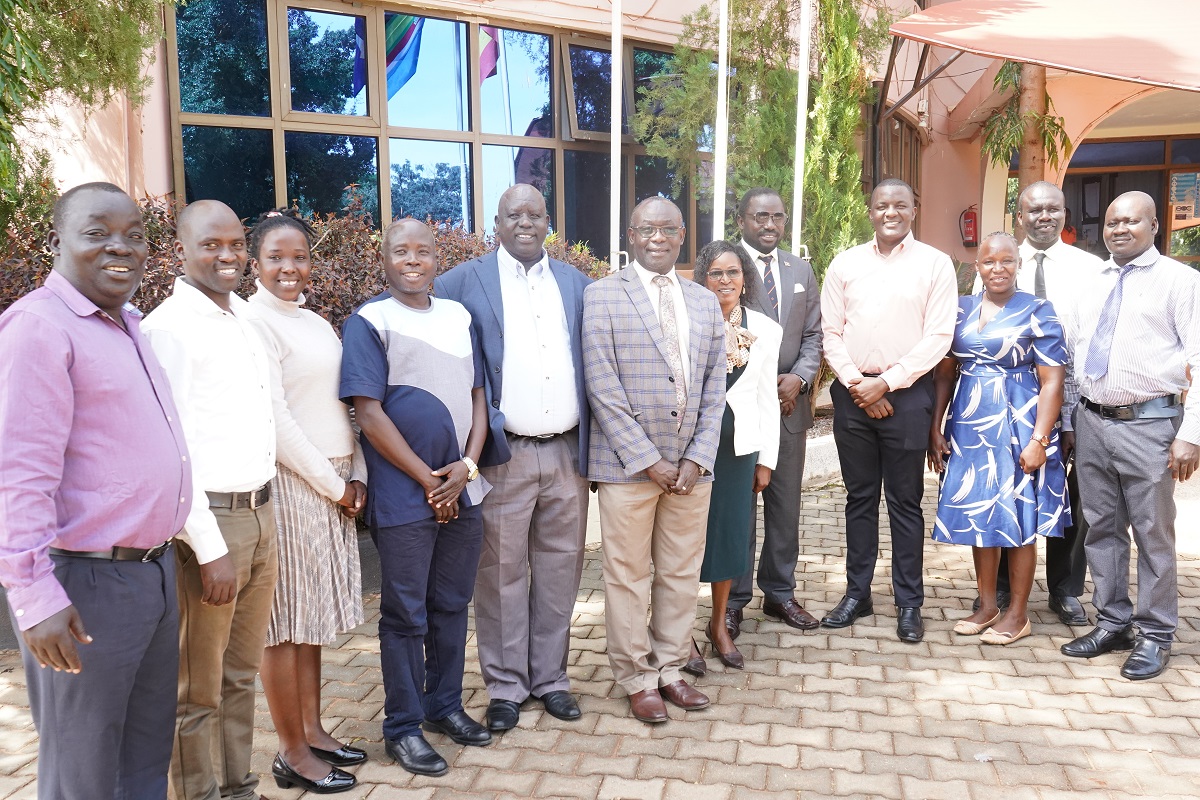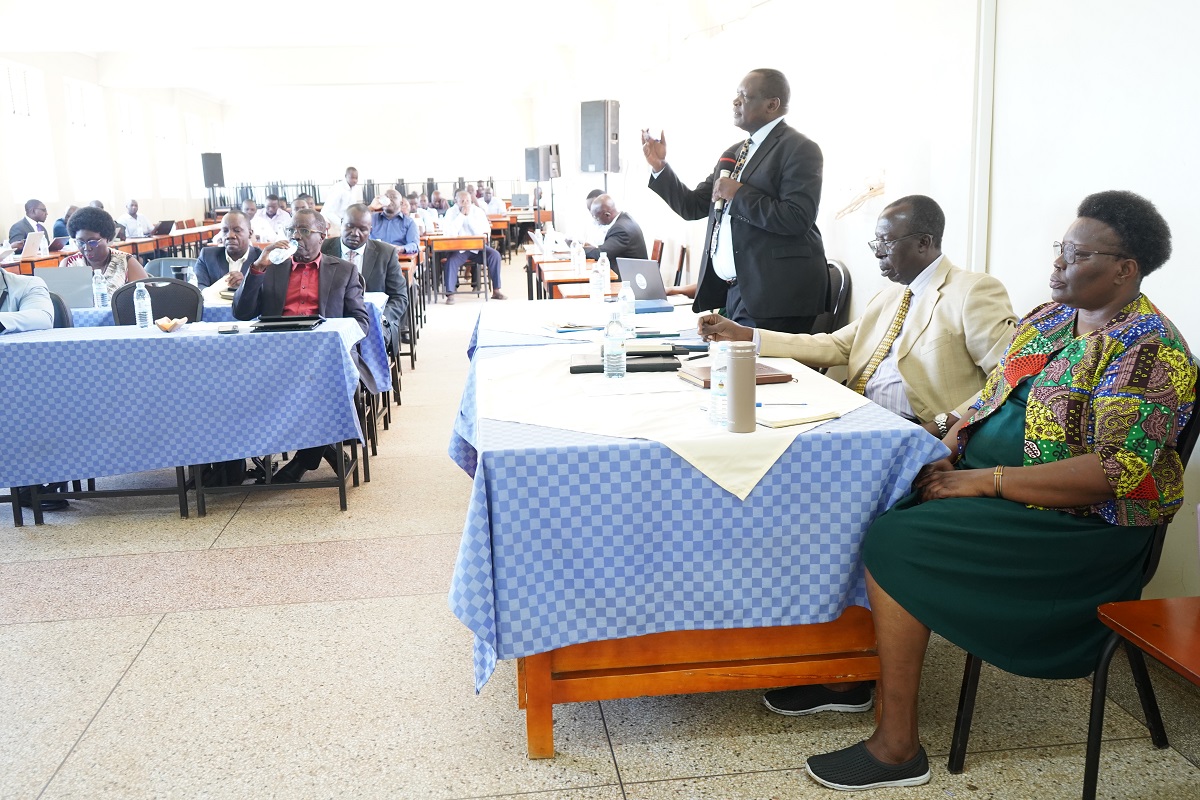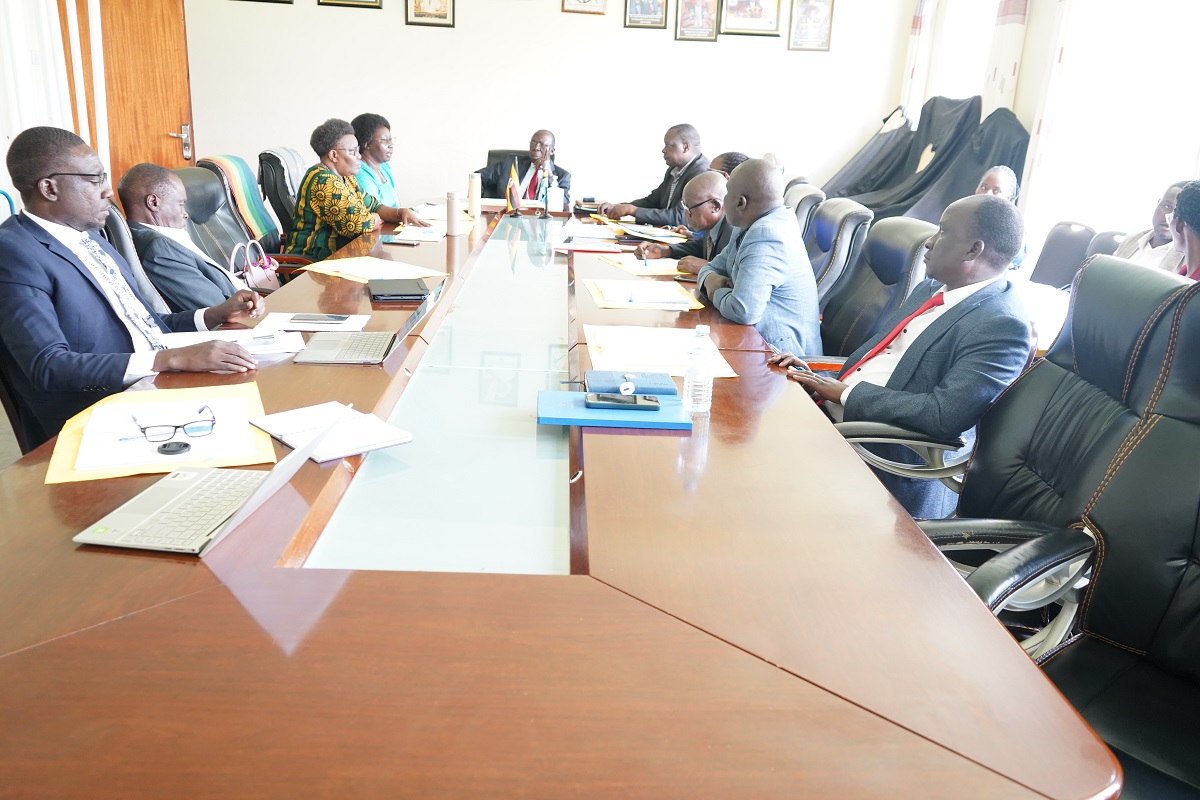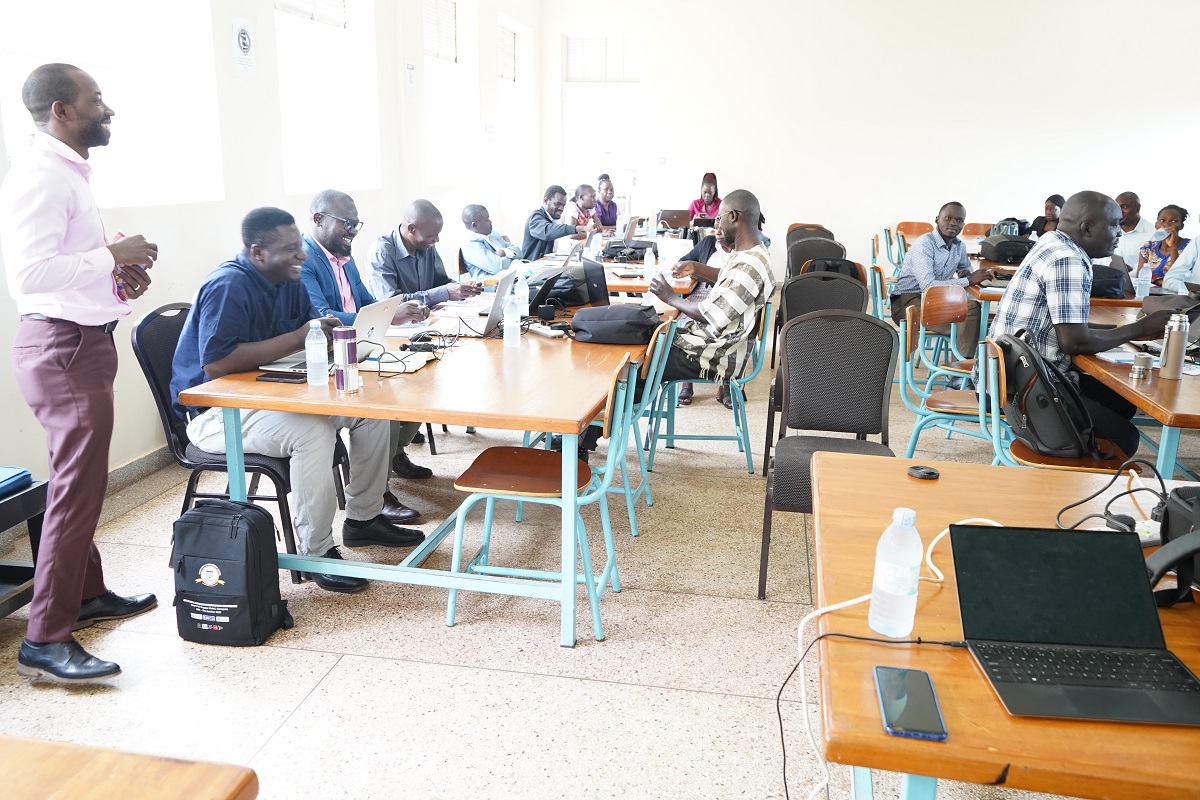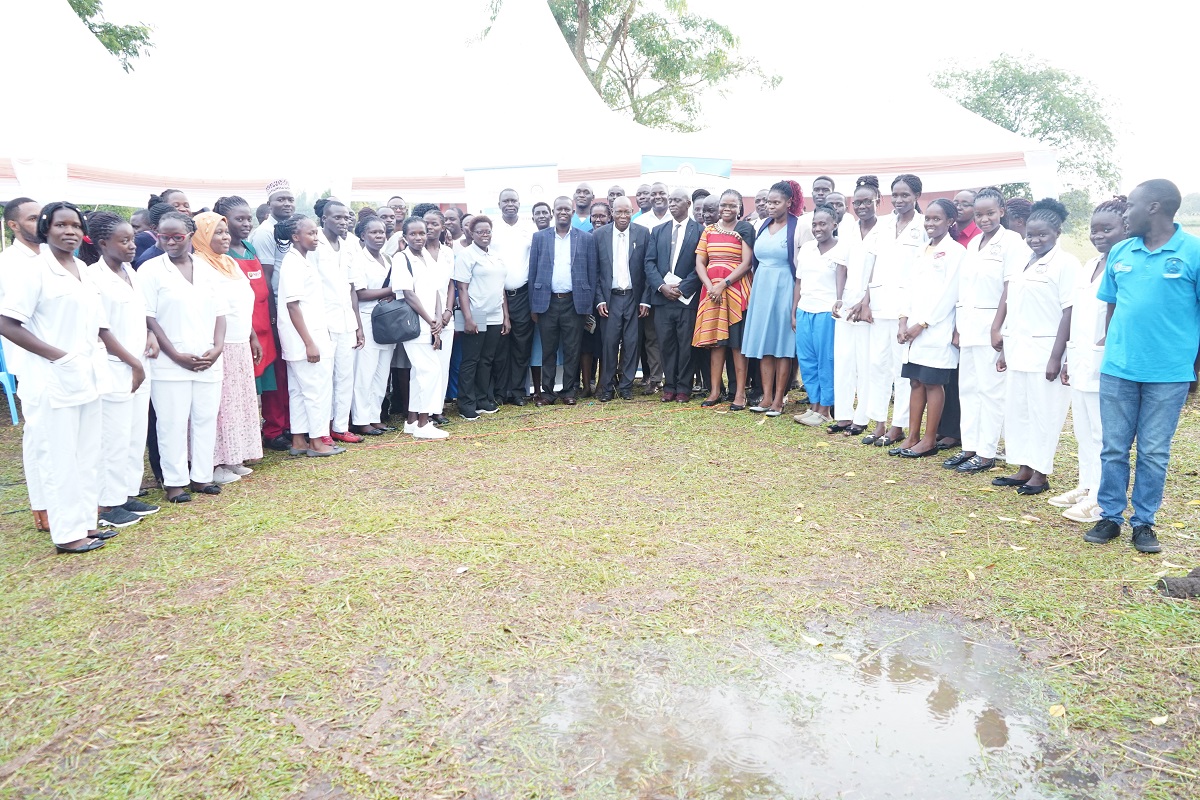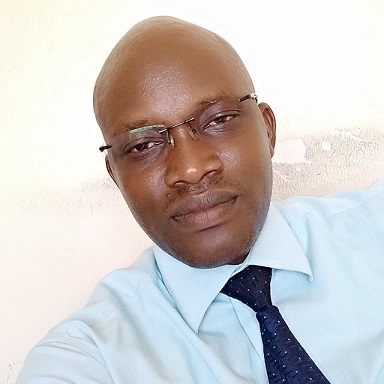By Patrick Opio
Senior Communications Officer
Lira University organised the 20th Public Lecture on 11th September 2025, with the theme, Inclusive Education: Advancing Equity, Access, and belonging in public universities in Uganda, a PhD research being undertaken by Ms Lydia Amongi, the Assistant University Secretary.
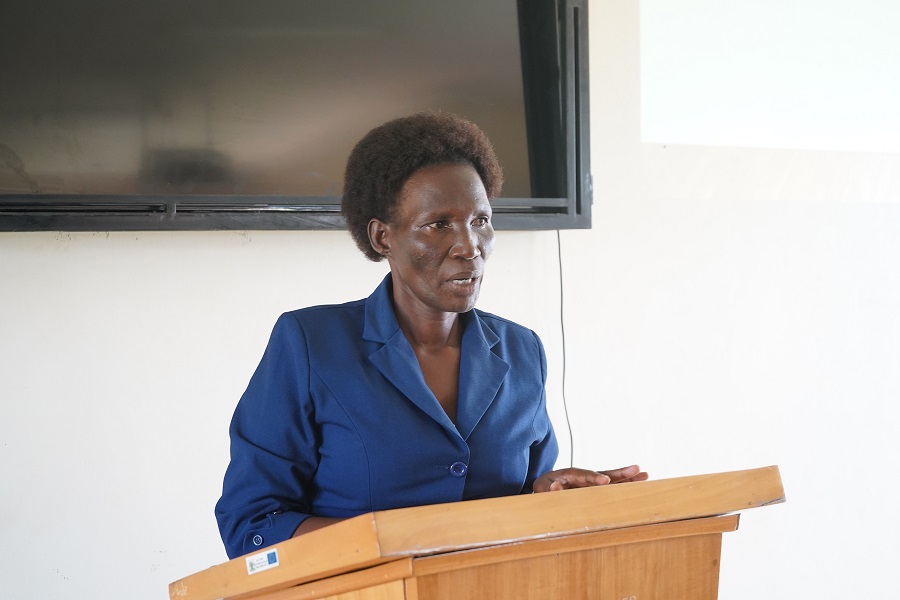
Ms Lydia Amongi
Pius Okello, a lecturer at All Saints University-Lango , who presented the summary of the research on behalf of Ms Amongi noted that inclusive education in Uganda’s higher education system is an ongoing process aimed at ensuring that all students, including those with disabilities, can access and participate fully in learning without discrimination.
“It involves modifying teaching methods, curricula, and the learning environment to accommodate diverse needs and preferences, fostering a sense of belonging and providing necessary support within mainstream institutions,” Okello said.
However, Okello notes, significant challenges like resource scarcity, inadequate training for educators, and negative attitudes persist, requiring continued commitment and policy implementation to achieve true quality and equity in higher education for everyone.
OBJECTIVES OF THE PRESENTATION:
- Explore the meaning and practices of inclusive education against existing theories and models as advanced by various scholars. (Nilholm, 2021); (Dovigo, 2017).
- Trace the history and development of inclusive education in Uganda.
- Explore the challenges in implementing inclusive education in public universities in Uganda.
- Suggest mitigation measures to the challenges identified
Key concepts
- Inclusive Education (IE)
- Inclusive education is the process of strengthening the capacity of education system to reach out to all learners as a strategy to achieve education for all (EFA). (Slee, 2018; UNESCO, 2001; Praveen & Qounsar 2018).
EQUITY
- The distribution of resources (human resources) or apportionment of opportunities (remunerative outcomes) as guided by the principles of fairness, justice, and responsiveness to individual or group needs (Zhu & Li, 2025).
- Inclusive education in Ugandan public universities advances equity, access, and belonging by incorporating diverse students, such as those with disabilities, into mainstream learning environments with appropriate support and accommodations, though significant challenges like funding and infrastructure gaps impede its full realization.
- Efforts are being made to create inclusive systems, though the specific implementation at the university level needs further development to ensure all students can fully participate and succeed.
Education for ALL (EFA)
- Global commitment that involved a broad coalition of countries, international agencies, civil society organizations, and development partners.
- To provide accessible, inclusive, equitable, and quality education for every individual regardless of gender, disability, socioeconomic status, ethnicity, or geographic location. (Benavot et al., 2016).
The Theory of Generative Interactions:
The Theory suggests that in order to facilitate inclusion, multiple types of exclusionary dynamics (self-segregation, communication apprehension, stereotyping and stigmatizing) must be overcome (Bernstein, et al. 2020).
Theoretical IMPLICATION
- The theory guides higher education institutions to be able to promote accessibility, participation and belonging for students with disability.
- It provides clear avenues for minimizing barriers.
- It exposes institutions to various approaches of dealing with disability issues since it calls for a transdisciplinary approach.
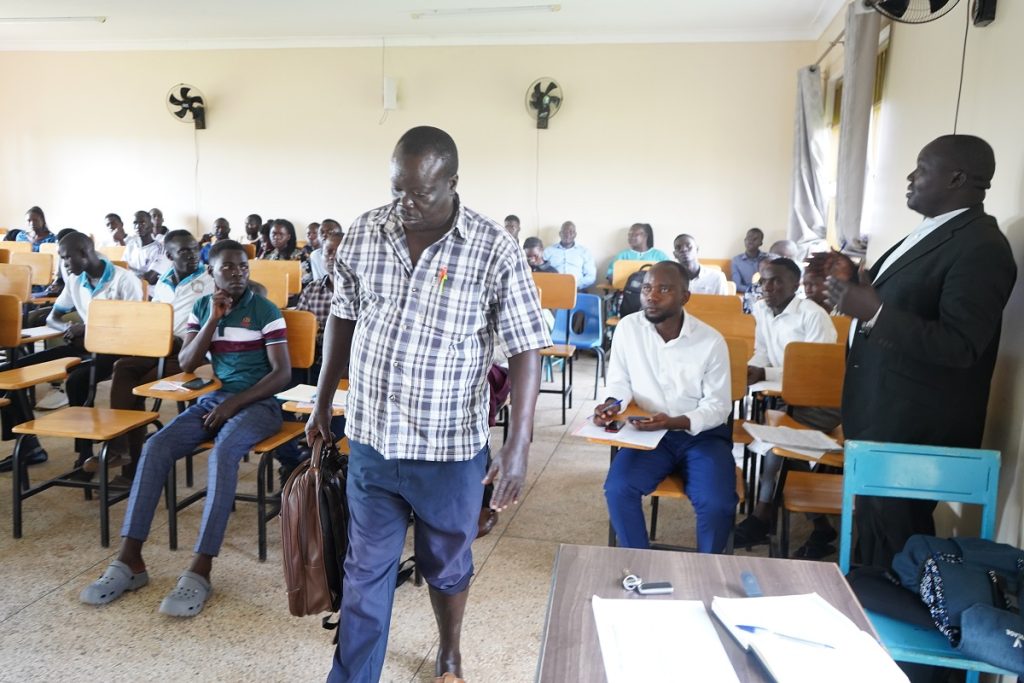
Audience at the Public Lecture listening attentively
Trends of inclusive education in Higher Education
- In 1948 the Universal Declaration of Human Rights was adopted. (Article 26 providing for the Right to Education for everyone).
- UN Convention on the Rights of the Child (1989): Recognized education as a basic right for every child.
- World Conference on Education for All (1990, Jomtien): Called for learning opportunities for every individual.
- Salamanca Statement (1994): A landmark in inclusive education which affirmed that, every individual has a right to education and to achieve their full learning potential within mainstream educational settings.
- UN Convention on the Rights of Persons with Disabilities (2006): Article 24 reinforces the right to inclusive education for persons with disabilities.
- Sustainable Development Goal 4 (2015): Emphasizes “inclusive and equitable quality education” for all by 2030.
- The Constitution of the Republic of Uganda (1995, amended 2005); Article 30: Guarantees the right to education for all Ugandans and Article 35: Recognizes the rights of persons with disabilities (PWDs), including access to education and protection from discrimination.
- The Persons with Disabilities Act (2020); Provides a legal framework for the inclusion of persons with disabilities in all aspects of society, including education. It requires education institutions to provide reasonable accommodation, accessible infrastructure, learning materials, and sign language interpreters where necessary.
- The Universities and Other Tertiary Institutions Act (2001, amended 2003 and 2006). Promotes equitable access to higher education. Mandates institutions to respect diversity and non-discrimination, and ensure that curricula and infrastructure are accessible to students with disabilities.
- The Education and Sports Sector Strategic Plan (ESSP) (2017–2020) Emphasizes inclusive education as a strategy to increase access and equity across all education levels. Recognizes the importance of supporting students with special needs, including in higher education.
- Uganda’s National Inclusive Education Policy (launched in 2020) Although primarily focused on pre-primary to secondary education, it sets the overall vision for inclusive education in Uganda. It promotes systemic changes and institutional responsiveness to diverse learner needs, which also influence university practices.
- The Uganda Vision 2040 and the National Development Plan (NDP III) Stresses human capital development, with inclusive education as a critical component. Promote equitable participation in higher education to empower marginalized groups, including PWDs.
- Equal Opportunity Act 2010; (Section 38) (1) An educational authority must not discriminate against a person. (Section 40) Educational authority must make reasonable adjustments for persons with a disability.
- Guidelines by the National Council for Higher Education (NCHE): The NCHE has developed the standard for inclusion of persons with disabilities to guide higher education institutions on how to promote diversity, inclusivity and fairness in institutions.
- Neoliberalism and Structural Adjustment Programmes of the mid 1980s reshaped inclusive education
- privatization of education led to regressive effects on the poor and disabled learners; widening inequalities.
- Cutting government expenditure: weakened the state’s capacity to finance specialized support (e.g., assistive technologies and trained teachers).
- The User fees and cost sharing in public universities raised household barriers, families with limited resources could not afford extra costs, children with disabilities were therefore, extremely excluded.
- Universities and schools faced underfunding, students with disabilities.
- Public education systems weakened, and inclusive education became dependent on NGOs and donor projects, creating uneven access.
- Uganda reconfigured its policies around admission, supervision, and completion within the education sector
- Introduction of UPE, led to increased access but straining quality and less support to inclusion.
- Development of special need and disability policies in all the public universities.
- Establishment of Disability support desks in all the universities
- The rise in inclusive management and Governance; representation of persons with disability in the decision making board and committees of universities as specified by the Universities and Other Tertiary Institutions Act, Recruitment of staff of staff with disability Inclusive budgeting.
Core Principles
- Equity: is about ensuring fairness and justice in access, participation, and outcomes for all students.
- Accessibility: Focuses on how higher education institutions remove barriers and create environments where students with disability can fully participate academically, socially, and physically just like their non-disabled peers.
- Participation: Ensuring that students with disability are meaningfully involved in all aspects of university life; academic, cultural, leadership, decision making social and extracurricular participation.
- Belonging: Emotional and psychological experience of being accepted, valued, and included as full members of the university community.
- Respect for diversity: The institution’s commitment to valuing, embracing, and responding positively to differences; it is not just tolerating disability, but actively recognizing it as a vital and natural part of human diversity.
Inclusive Education in Practice
- Physical Accessibility
- Buildings (lecture halls, libraries, dormitories) must have ramps, elevators, signage, wide doors, accessible toilets, etc.
- Campus transportation should accommodate wheelchairs and other mobility aids.
- Curriculum and Pedagogy (Universal Design for Learning, inclusive assessment); UDL “scientifically valid framework for guiding educational practice,” it puts the burden of change where it belongs:
- On the curriculum, it facilitates the design and implementation of a flexible, responsive curriculum.
- On the infrastructure, it emphasizes designing the buildings from the beginning with flexible Universal Design principles in mind so that all users could have access.
- Inclusive assessment, looks at adjustment of curriculum and methodology emphasizing that course design should follow the Universal Design for Learning (UDL) principles; offering multiple ways for students to engage, access content, and demonstrate their knowledge.
- Faculty training: Sensitization and inclusive teaching methods
- Support services: Disability support units, peer mentoring, counselling services, accessible materials
Infrastructure:
- Braille signage, ramps, accessible ICT.
- Institutional commitment: Inclusive policies, data tracking, leadership
- Policy and Governance; Representation in decision making bodies.
- Academic Accessibility.
- Learning materials (like textbooks and handouts) should be available in alternative formats (Braille, large print, audio, digital text).
- Assistive technologies (screen readers, speech-to-text software) should be supported.
Technological Accessibility
- University websites, learning management systems (e.g., Moodle, Blackboard), and online resources must meet accessibility standards (like WCAG – Web Content Accessibility Guidelines).
- Virtual learning environments should be passable by students using assistive technologies.
Social and Cultural Inclusion
- University policies and campus culture should promote diversity, equity, and inclusion.
- Disability awareness training for staff and students can help eliminate stigma and foster a supportive environment.
Administrative and Support Services
- Disability support offices should assist students with accommodations (e.g., extra time for exams, note-taking assistance).
- Counselling and mental health services should also be inclusive and accessible.
- Policy and Legal Framework
- Universities must comply with national and international laws protecting the rights of people with disabilities (e.g., the UN Convention on the Rights of Persons with Disabilities, national disability acts).
Barriers
- Institutional attitudes and stereotypes: Stereotypes, negative attitudes and prejudice, and biases develop over time and operate at different levels; conscious attitudes that result in deliberate and calculating behaviors and unconscious attitudes that result in spontaneous and unplanned. Lack of funding and infrastructure: Relevant resources and relevant skills must be provided to deal with inclusive classrooms.
- Inadequate policies or poor enforcement, limited capacity and training for educators, Technology and Resource gaps.
- Institutional attitudes and stereotypes: Stereotypes, negative attitudes and prejudice, and biases develop over time and operate at different levels; conscious attitudes that result in deliberate and calculating behaviors and unconscious attitudes that result in spontaneous and unplanned behaviors.
- Lack of adequate preparation of Teachers/Lectures: due to the lack of clarity and uncertainty on what it entails, lecturers deal with several hurdles in their experience of implementing inclusive education and learning especially given the number of new initiatives launched in local education.
What should be adopted to effectively implement inclusive education?
- Audit institutional inclusivity.
- Train Faculty and staff
- Provide reasonable accommodations
- Revise policies and curricula:
- Strengthen disability support units
- Partner with disabled persons’ organizations (DPOs)
- Institutional culture change
- Sustainable inclusive infrastructure
- Integration into national education frameworks
- Invest in accessible learning materials,
- Provide assistive technologies
- Promote universal design of learning-based differentiated curricula,
- Foster an accessible environment including accommodations
- Foster an overall culture of inclusion.
Dr Laury Lawrence Ocen, a Senior Lecturer at the faculty of Education, had the below rejoinder and message about the “inclusive education.”
The three ways of looking at inclusivity are:
- Inclusivity as Discourse (ideas, arguments, propositions)
- Inclusivity as policy (instruments of promulgation and implementation)
- Inclusivity as practice (Putting policies into actions)
- Demystifying Social and Intellectual Boundaries from University Spaces.
- Provision of suitable intellectual infrastructures for people with disability and other vulnerability groups.
- The uneducated should be given space to contribute to knowledge about equality, equity, inclusivity, and vulnerability.
Inclusive scholarships
- The structuring of academic centres in universities:
- Centre of Disability Studies/Centre for Vulnerability Studies
- Centre for Gender Studies
- Centre for African and Oriental Studies
- Academic and Research Chairs should aim at restructuring scholarships on inclusivity studies.
Should universities adopt specialization models?
- The way forward should be de-specialization of the university. Universities are restructuring their specialized trainings to become more interdisciplinary (London School of Economics, Kwame Nrumah University of Science and Technology teach multiple disciplines instead of singular disciplines/
- Multidisciplinary, transdisciplinary, cross disciplinarily are the way forward if we are to address questions of inequality and vulnerability. We need to understand inequality, equity, vulnerability from different epistemic lenses if we must do proper conceptualization
- Inclusive languages. Languages have concepts and terminologies that express inequality, disability, vulnerability differently. We cannot address exclusion, inequality, vulnerability outside language.
Key Aspects of Inclusive Education in Uganda’s Public Universities
- Inclusion of Diverse Students:
The core principle is to include all students, including those with disabilities, in the university community, allowing them to learn together.
- Equal Access to Learning:
Inclusive education aims to provide equal opportunities for all students to access higher education and learning resources.
- Creating a Sense of Belonging:
By integrating diverse experiences, inclusive education fosters a sense of acceptance and belonging within the university.
- Multiple Pathways:
This can involve various strategies, from mainstreaming with specialist support to creating specialized learning units or programs, though the emphasis is on integration where possible.
Challenges to Implementation
- Funding Issues:
Public universities face significant financing challenges, including inadequate government funding and a shortfall in covering the true cost of education, which affects the implementation of inclusive programs.
- Infrastructure and Resource Gaps:
A lack of sufficient resources, including appropriate infrastructure and teaching materials, can hinder the creation of truly inclusive learning environments.
- Teacher Training and Support:
Ensuring faculty and staff are equipped with the knowledge and skills to support diverse learners is a crucial, yet often under-addressed, challenge.
- Awareness and Cultural Barriers:
Societal attitudes and awareness levels about the benefits and necessity of inclusive education can also act as barriers to full implementation.
Way Forward
- Policy and Advocacy:
Continued efforts to develop and implement strong policies that support inclusive higher education are vital.
- Investment:
Increased investment in funding, infrastructure, and teacher training is essential for creating supportive learning environments in public universities.
- Collaboration:
Partnerships between universities, government bodies, and civil society organizations can help to share resources and expertise to advance inclusive practices.


